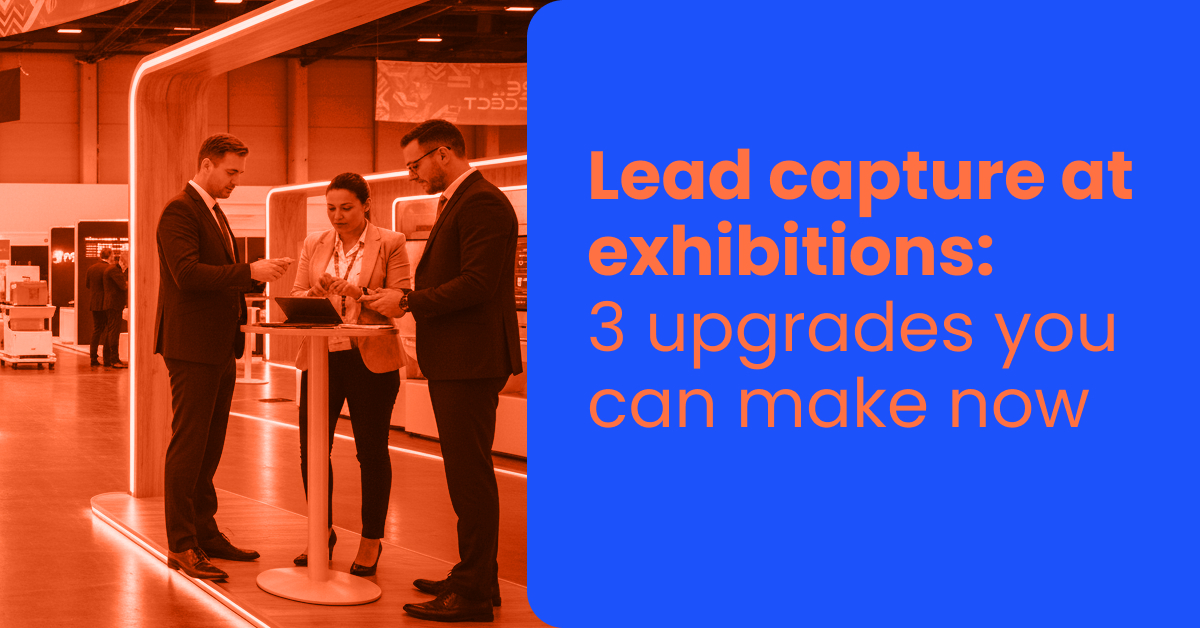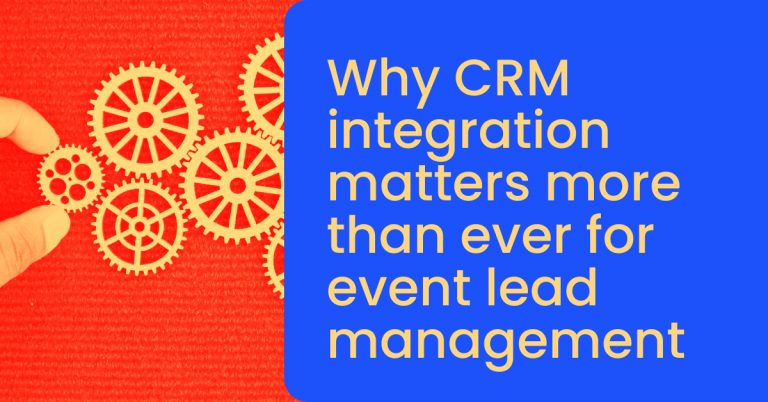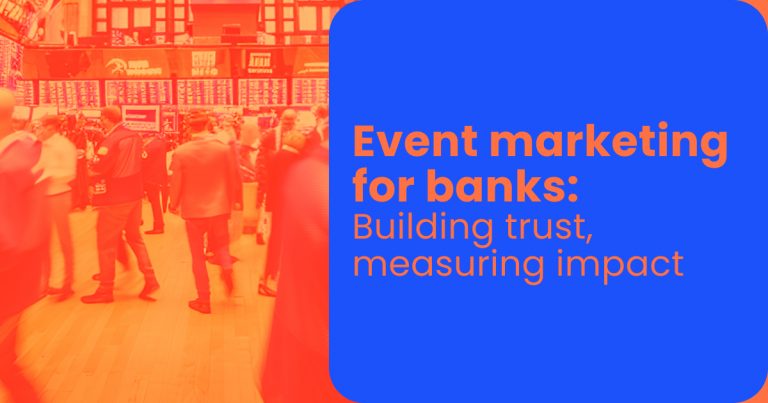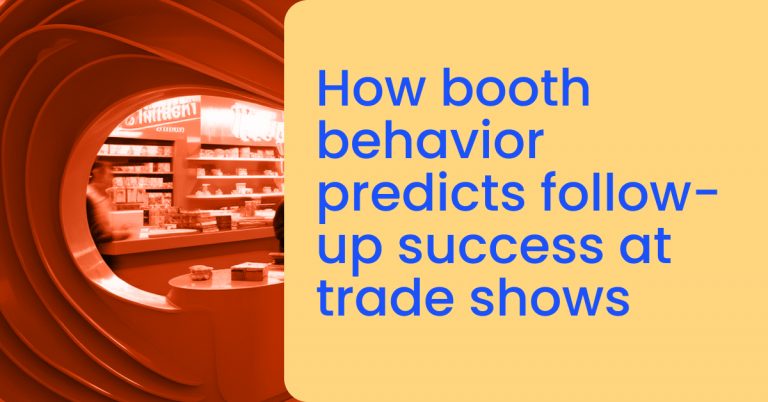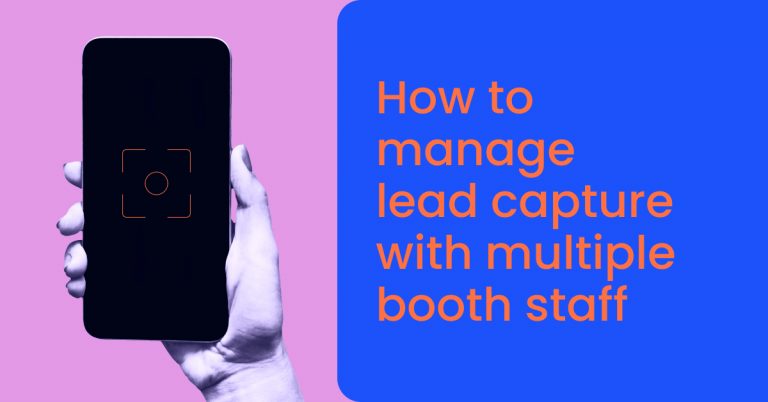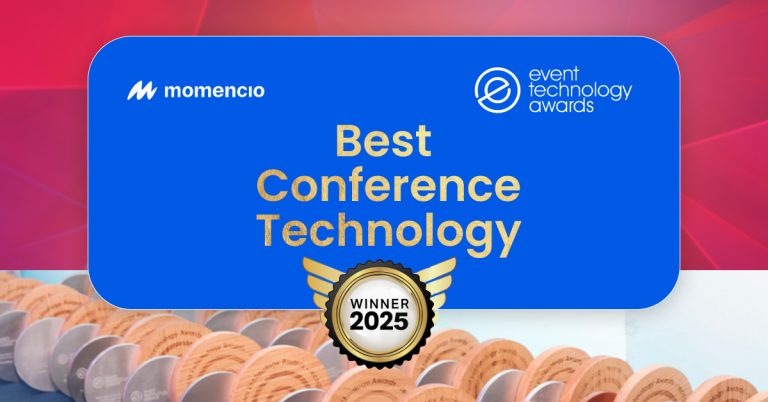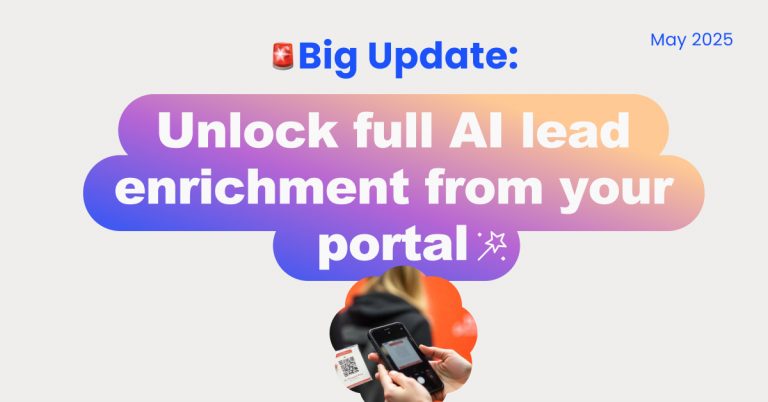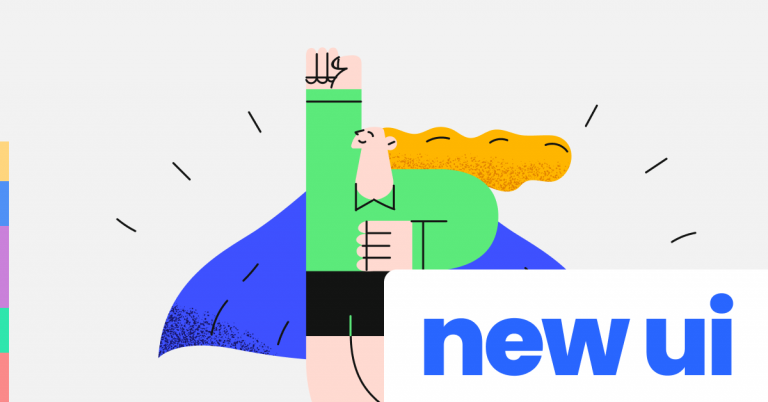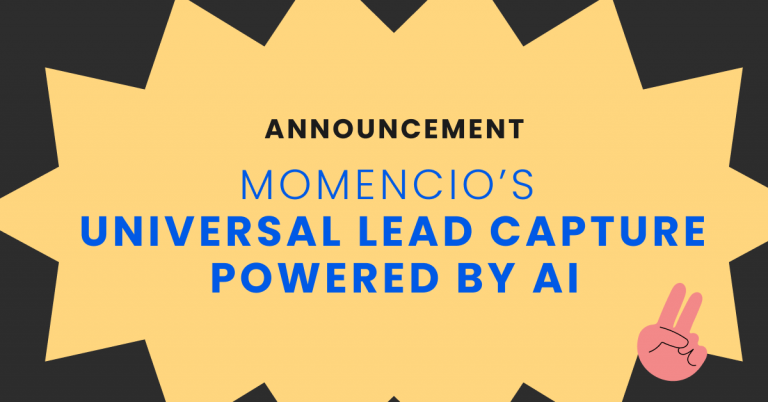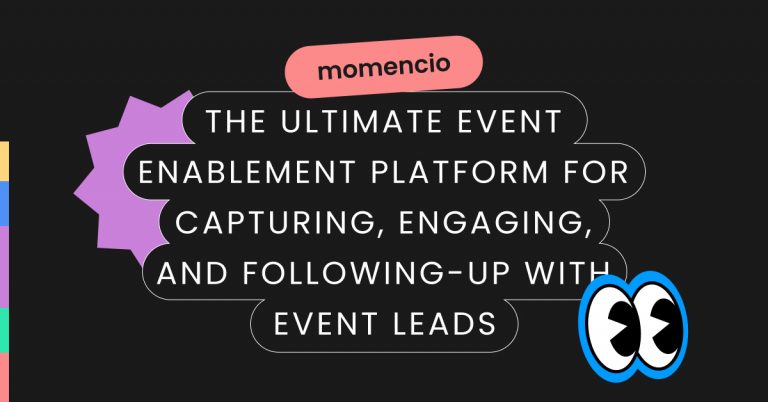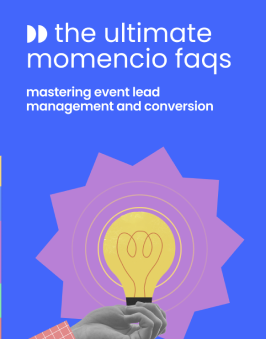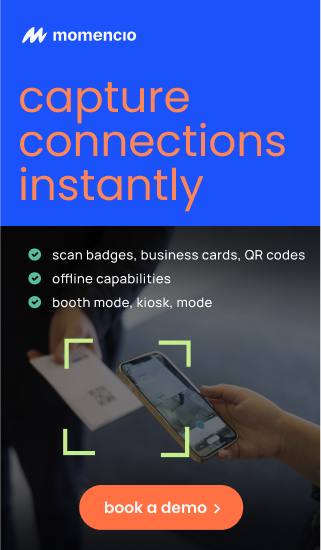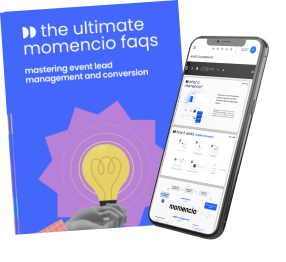At Dreamforce 2025, one clear message emerged: data alone isn’t enough — real-time action is. The event spotlighted how business-systems are moving from storing leads to acting on them immediately.
We attended Dreamforce this year as visitors and saw it first-hand. On the show floor of event marketing, the same principle applies: capturing a badge or contact info is just the starting point. What really counts is what you do next.
Key takeaways for lead capture at exhibitions
- Learn three immediate upgrades that exhibitors can apply — no big overhauls required.
- Discover why capturing behaviour rather than just contact info is now a competitive edge.
- Understand how fast follow-up (within 24 hours) boosts conversion and prevents leads from going cold.
- See how integrating lead capture data seamlessly into your CRM turns event interactions into pipeline-ready opportunities.
- Get a clear, practical roadmap grounded in 2025 trends, that aligns with modern event-sales intelligence.
Let’s be blunt: every exhibitor collects leads. But few turn those leads into meaningful follow-ups while the momentum is still there. The gap isn’t in the number of contacts—it’s in how fast and how smart you act on them.
At momencio, we design our platform so event teams capture context (who they are and what they are interested in), trigger fast follow-up, and feed that into their sales process. Because in our world, the shorter the time between booth interaction and the next step, the higher the chance of conversion.
Here are three simple upgrades exhibitors can make now to move from “just capture” to “capture + act”.
Upgrade 1: Capture behavior, not just contacts
Most exhibitors already use digital tools to capture leads. In fact, a 2025 study showed that 62% of exhibitors now use lead-retrieval apps, and 46% use mobile event apps that support live booth interactions. The problem isn’t access to technology — it’s how these tools are being used. Too many teams still treat them like digital business cards, collecting contact details but missing the actual story of what happened at the booth.
That story matters more than ever. At Dreamforce 2025, the theme of “connected data” was everywhere. Conversations weren’t about collecting more leads; they were about understanding what people did. Which demos caught attention? Which conversations lasted longest? Which content kept visitors engaged? That’s the data that separates qualified interest from casual curiosity.
Across the industry, tools are already shifting in this direction. Reports from early 2025 show that smart lead-capture systems are becoming the new norm, designed to collect not just names but meaningful engagement signals. Another survey found that 39% of exhibitors now use RFID or NFC badges to track movement, and 61% personalize their booth experience based on visitor interest. Behavioral data is becoming the new currency of trade shows.
This is exactly where momencio helps exhibitors modernize without extra effort. Our AI IntelliSense™ automatically evaluates actions performed by leads, their urgency, strategic fit, and conversion signals—so your team gets a live, ranked view of who matters most. IntelliStream™ records those actions in real time, creating a clear view of how each visitor engaged across every touchpoint. And when booth reps use Smart Notes, the conversation context becomes part of the record too.
That means by the time your team leaves the venue, you already know which leads showed genuine interest — not just who stopped by. The difference is simple but powerful: contacts tell you who came; behavior tells you who’s ready.
When 56% of marketers now spend at least one-fifth of their total budget on trade shows, guessing who’s interested is no longer an option. Capture what people do, not just who they are — that’s how lead capture becomes lead intelligence.
Upgrade 2: Follow up while the lead’s still hot
A report from Trade Show Labs revealed that 40% of exhibitors wait three to five days after a show before following up with the leads they collected. That delay might not sound disastrous, but it’s enough to erase the emotional connection that happens on the booth floor.
Every exhibitor knows how quickly post-event momentum fades. Attendees move to the next show, their inbox fills up, and your brand slips from memory. The gap between capture and conversation is where opportunity quietly dies.
Businesses that act on intent signals immediately earn attention. Those who wait, lose it.
For exhibitors, the rule is simple: your first follow-up should happen within 24 hours of the interaction. Not a templated “thank you for visiting” email, but a personalized continuation of the conversation.
That’s where tools like momencio make it practical to do what used to be impossible. Using our Digital Asset Library, booth teams can instantly access to a plethora of personalized content, including but not limited to interactive presentations, customized brochures, tailored case studies, and product or demo videos during the show, while you field rep is conversing with the attendee — no need to hunt for files or wait for marketing to share them later. With LiveMicrosite™, that same content can be assembled into a personalized post-event hub for each visitor, complete with the exact materials discussed at the booth.
So instead of a plain follow-up email, your contact receives a microsite that says:
“Here’s the case study you asked for, the demo clip we showed, and a short note recapping our chat.”
Every click, view, and revisit is tracked, giving your team visibility into which leads are re-engaging.
The result: your follow-up feels human, timely, and relevant — not automated noise.
Too many exhibitors are still chasing quantity over connection. But those who respond with precision and speed are setting a new benchmark for post-event success.
In short: The right time to follow up isn’t “after the event.” It’s while the memory still feels real.
Upgrade 3: Integrate your capture into your CRM, not your inbox
A lot of exhibitors still treat lead data like luggage — packed at the booth, unpacked days later. That delay is where momentum dies.
Unified data is no longer a technical goal; it’s a business requirement. The same applies to event marketing. When leads sit in spreadsheets or wait to be imported manually, the connection between booth engagement and sales intent breaks. The longer it takes to sync, the colder the lead becomes.
Modern event teams have started rethinking this. Instead of waiting until “after the show,” they connect their capture systems directly to their CRMs so the data — and the story behind it — travels instantly.
That means every lead enters the sales pipeline already enriched with details like what content was viewed, which demo was attended, or what topic was discussed.
momencio’s integration with major CRMs and marketing automation platforms let behavioral data flow in automatically, while the event dashboard updates live with capture metrics, engagement signals, and rep performance. The goal isn’t just automation — it’s visibility and revenue mapping. You don’t have to guess which leads matter most; the system surfaces them as they happen, and your team are free to take necessary action to drive the next steps.
The difference between exporting leads and syncing them is the difference between reacting and responding. When the two systems — event app and CRM — work together, your team doesn’t start follow-ups from zero. They start from insight.
In short: integration isn’t about technology. It’s about continuity — keeping the story of each lead alive from the booth to the inbox to the pipeline.
Conclusion
The event floor is no longer just a place to collect leads — it’s a live data environment. Every conversation, demo, and content view leaves a signal. Exhibitors who capture those signals, act on them fast, and connect them to their CRM are already operating at a higher level.
The three upgrades we covered — capturing behavior, following up while the lead’s still hot, and integrating data into your systems — are not futuristic goals. They’re small, immediate shifts that bring you closer to how modern event teams now work.
This is the direction the industry is moving toward: event intelligence that turns real-time actions into measurable outcomes. Platforms like momencio were built with that future in mind — combining AI-driven insight, personalized content delivery, and seamless integration to help exhibitors move from collecting data to creating impact.
Because in today’s event landscape, success isn’t defined by how many contacts you gather. It’s defined by how intelligently and how fast you act on them.
FAQs on Exhibit-lead capture and follow up
- What happens during lead retrieval at trade shows and how does it work?
- Lead retrieval is the process of capturing attendee details at a show — via badge scans, QR codes, business-card scans — and then using that data so your sales team can follow up.
- In practical terms: your booth rep scans someone’s badge, the system pulls their name + company (and sometimes more). Then you add context (what they talked about, what demo they watched), and the lead is routed into your follow-up system.
- With momencio, the lead retrieval step ties directly into extra layers: Smart Tags, AI enrichment, and linking to the content the visitor engaged with — so follow-up isn’t just “here’s your card back” but “here’s what we talked about”.
- How can exhibitors qualify leads at the booth in real time (rather than just scan contacts)?
- The key is to capture not only who the lead is, but what they did, how they interacted, what they are interested in. Quick qualification is better than a huge paper form.
- At the booth you can ask two or three quick questions, or tag behavior (e.g., “watched demo”, “asked pricing”, “downloaded content”). The moment you capture those tags your sales/follow-up workflow gets smarter.
- Using momencio, booth staff can add Smart Notes and custom tags right after scanning — this captures that context on the spot. The lead becomes “John Doe – watched Demo X at booth – asked about timeframe”, instead of just “John Doe – Company X”.
- What is the right timing for follow-up after an event so leads don’t go cold?
- Timing matters a lot. Waiting days often means the lead’s attention has drifted. Many exhibitors still wait 3–5 days to follow up.
- Best practice: aim for a follow-up within 24 hours (or even the same day). It doesn’t need to be a full sales pitch — a short “Thanks for stopping by, here’s what we discussed” note goes a long way.
- With momencio, you can trigger follow-up automatically based on behavior recorded at the booth (via LiveMicrosite or Digital Assets). The first touch can arrive before you’re back at your hotel, keeping momentum while it’s fresh.
- How can I ensure the lead-capture data from the event integrates with my sales or CRM system?
- The weakness in many exhibitor workflows is that leads get exported manually, cleaned up later, or sit in spreadsheets before they reach sales. That kills speed and context.
- To avoid that: pick capture tools that sync directly to your CRM or marketing platform; make sure captured behavior tags, content engagement, and lead status all flow into the same place your sales team uses.
- In the momencio platform you’ll find integration options with major CRMs, real-time dashboards for event engagement, and data that flows from the booth capture tool directly into your pipeline — so you avoid the “we’ll import later” lag.
